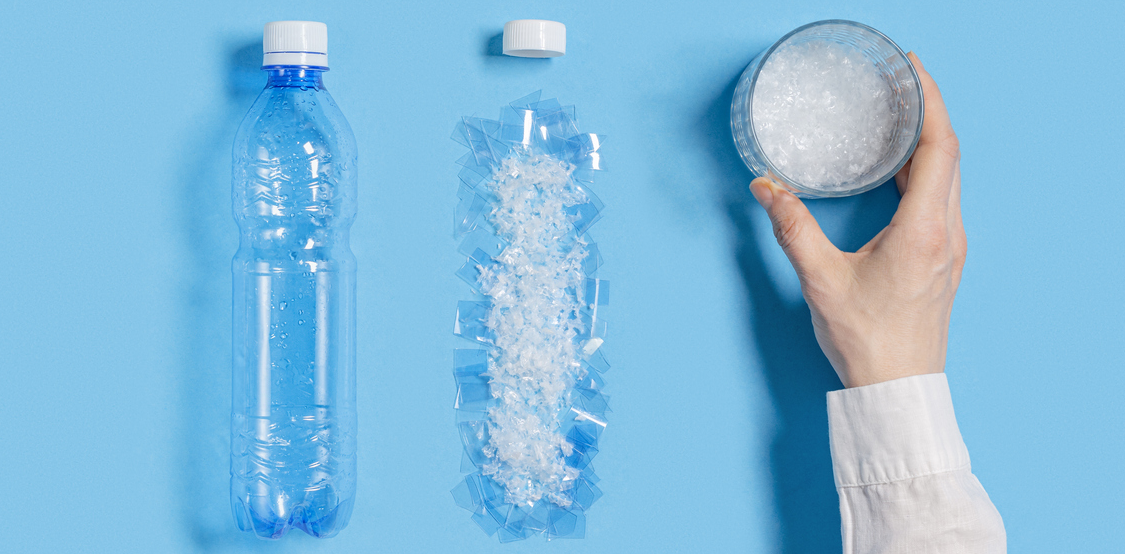
Foto: Istock/yratoba
Micro- and Nanoplastics in PET Bottles: An Invisible Danger?
Latest Columbia Study Shows - Around 240,000 Plastic Fragments per Liter.
Plastic, an indispensable part of our daily lives – practical, versatile, and affordable. But plastic has a dark side: it is hard to degrade and breaks down into ever smaller particles called micro- and nanoplastics. The latter measure less than 1 micrometer, while a human hair is about 70 micrometers in diameter.
Micro- and nanoplastics are not only present in oceans, air, and soil but also in food, cosmetics, and clothing. Particularly concerning is their presence in PET bottles, frequently used for beverages like water, juice, or soda. The amount of micro- and nanoplastics and their potential health impacts are the subjects of intensive research.
How Do Micro- and Nanoplastics Form in PET Bottles?
PET stands for polyethylene terephthalate, a plastic made from petroleum. PET bottles are lightweight, stable, and reusable. However, they can also release plastic particles into the beverage, especially when pressed, heated, or opened. A study by Columbia University in New York found that a typical 1-liter plastic water bottle can contain around 240,000 plastic fragments, with 90 percent in the nano range.¹ Another study showed that plastic parts end up in the beverage as abrasion when the cap is opened and closed.²
The plastic particles in PET bottles are not only made up of the polymer itself but can also contain additives such as plasticizers, dyes, or UV stabilizers. These substances can influence the properties and effects of micro- and nanoplastics.³
Are Micro- and Nanoplastics Dangerous to Health?
The health effects of micro- and nanoplastics are not yet fully understood. However, there is evidence that micro- and nanoplastics can enter the human body through food intake or inhalation. Once there, they can cause various effects depending on size, shape, composition, and amount, such as:
- Inflammatory reactions in tissues
- Damage to cell membranes or genetic material
- Disruption of hormonal balance or the immune system
- Accumulation in organs like the liver, kidneys, or brain
- Impairment of gut flora or lung function ⁴ ⁵ ⁶
The risks can vary depending on individual factors such as age, gender, health status, or diet. Additionally, long-term effects or interactions with other pollutants may only become apparent after years or decades. Therefore, further research is needed to clarify the exact consequences.
How Can You Avoid Micro- and Nanoplastics?
To reduce exposure to micro- and nanoplastics, there are some tips you can follow, such as:
- Do not store PET bottles for too long, do not heat or refill them
- Prefer beverage concentrates that come into minimal contact with plastic
- Prefer ready-to-drink beverages from glass bottles, stainless steel bottles, or ceramic cups
- Drink tap water or filter it
- Buy organic or locally grown food
- Use cosmetics without microplastics (e.g., with the "microplastic-free" label)
- Wear clothing made from natural fibers such as cotton, wool, or linen
- Avoid, separate, and recycle plastic waste
Conclusion
Micro- and nanoplastics are a potential invisible danger that can affect not only the environment but also our health. PET bottles are a common source of micro- and nanoplastics, which we can ingest through drinking water or other beverages. The health effects of micro- and nanoplastics are not yet fully researched, but there are indications of possible damage to cells, organs, or systems. To reduce exposure to micro- and nanoplastics, we should reduce our plastic consumption and opt for alternative materials.
Given the growing concerns about micro- and nanoplastics in our drinks, it is important that consumers are informed and that the industry explores more sustainable packaging alternatives. The path to a more plastic-free future requires a collective effort on a scientific, industrial, and societal level.
Sources:
¹ Qian, N., Wang, Y., Yan, B., & Li, J. (2020). Nanoplastics in commercial PET water bottles: A new analytical method and occurrence data. Water Research, 186, 116361.
² Kosuth, M., Mason, S. A., & Wattenberg, E. V. (2018). Anthropogenic contamination of tap water, beer, and sea salt. PloS one, 13(4), e0194970.
³ Ziemann, S. (2019). Was ist Mikro‐ und Nanoplastik? Was wir bisher wissen und was noch nicht. Bundesinstitut für Risikobewertung.
⁴ Dirtl, T. (2021). Die Risiken von Mikro- und Nanoplastikpartikeln. Rudolphina.
⁵ Bundesinstitut für Risikobewertung. (2020). Wie reagieren Zellen auf Mikro- und Nanoplastik?
⁶ Volle Kanne. (2019). Mikroplastik als unsichtbare Gefahr. ZDFmediathek.
